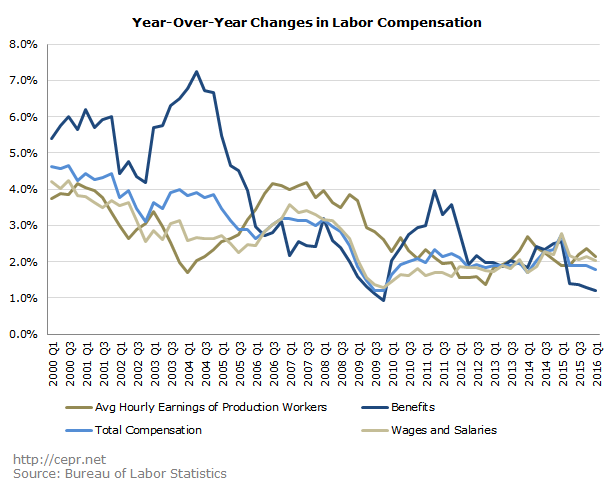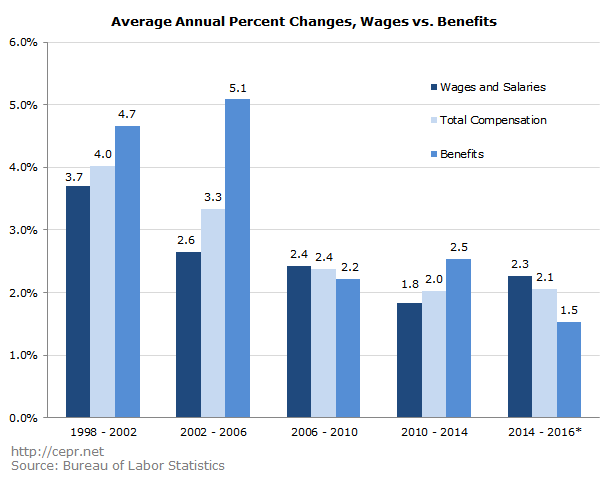May 13, 2016
The Federal Reserve Board, along with most economists, has been closely tracking the rate of increase in the average hourly wage reported by the Bureau of Labor Statistics in its monthly employment report. This series has shown a modest uptick in growth over the last two years. While the current pace (2.5 percent over the last year) is only slightly above the Fed’s 2.0 percent inflation target, it actually overstates the extent to which workers are benefiting from the recovery.
While wage growth has accelerated modestly from its pace earlier in the recovery, the rate of growth in benefits, most importantly healthcare, has slowed. As a result, there has been almost no change in the rate of growth in total compensation.
This can be seen by comparing the rate of growth of the average hourly wage series with the growth in the Employment Cost Index (ECI) as shown below. The ECI series also has separate wage and benefit components.1

As can be seen, the modest acceleration in wage growth has been accompanied by a slowing in the growth of benefits, leading to almost no change in the rate of growth of total compensation. This is shown in the chart below. In short, we are not seeing any evidence of an acceleration in compensation growth; instead, we are seeing a shift in the composition of compensation from benefits to wages.

Note: Growth is measured in nominal dollars and presented in annualized rates for both wages and benefits. Each four-year period goes from the second quarter of the base year to the second quarter of the end year.The last period* goes from the second quarter of 2014 to the first quarter of 2016.
1 The average hourly wage series is for production and non-supervisory workers since the overall series does not go back before 2000.






